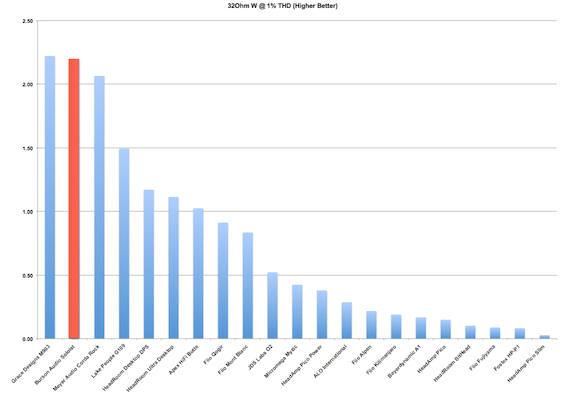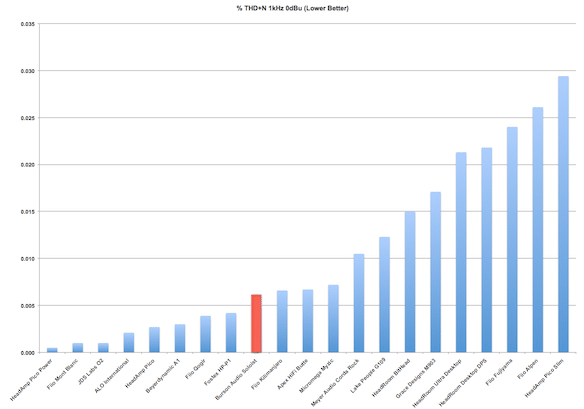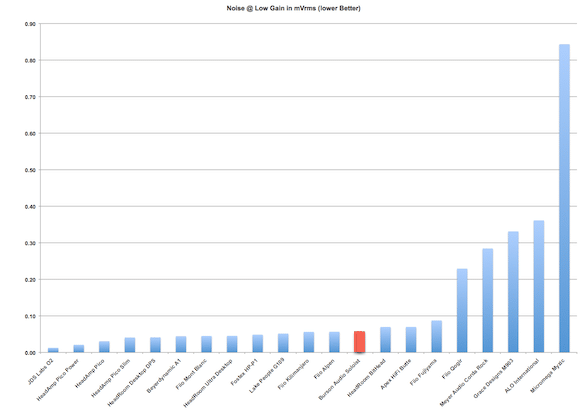
Unlike the traditional stereo hi-fi industry which for decades relied on a well established set of measurement standards, the headphone-fi industry did not have it. This meant that while traditional audiophiles could draw on subjective reviews and objective independent measurements, headphone enthusiasts relied purely on subjective reviews without access to unbiased measurement reports.
Chief editor Tyll Hertsens of Inner-Fidelity (the headphone-fi branch of Stereophile) changed that. In his reference class testing lab, his team is objectively measuring and documenting the specifications of high-end headphones and headphone amplifiers.
Tyll’s reports enable comparisons between phones and amps and for the first time, headphone enthusiasts too can obtain independently verified facts beyond subjective reviews.
In his latest report, Tyll tested 21 popular headphone amps from around the world, from high power desktops to battery powered portables. At the end, every tested specification confirmed what we and Burson users already knew. That our design is the best in the world.
Power
Is bigger always better? Yes, but only if the bigger power is accompanied by low distortion (accuracy) and low noise floor (clarity).
Burson Soloist is the second most powerful amp in the report. 0.1% less powerful compared to the twice more expensive Grace Design.
However, it was the accompanied low distortion and noise floor which made the Soloist best among the rest.
Accuracy
 Achieving high driving power is very easy. Adding more active components on the signal path and doubling the number of power transistors and power is guaranteed to go up.
Achieving high driving power is very easy. Adding more active components on the signal path and doubling the number of power transistors and power is guaranteed to go up.
However, adding more to the signal path could also increase distortion as each component introduces its own error.With only 21 carefully selected components on its output signal path, the Soloist delivered thundering power with amazingly low distortion. In fact, its distortion rate is matched only by much lower power, battery based head amps. This report confirmed our less is more design approach.
Clarity
Noise reduction is a vital challenge in high power head amp designing. Unlike speaker amps which very few operate in pure Class-A, almost all reference class head amps do. Which means they are amplifying at full power at all times, with or without incoming signal. In a pure Class-A design such as ours, any background noise, be it externally induced or internally generated will be amplified to maximum volume. And since wearing headphones is equivalent to pressing a pair of speakers against the ears, therefore, any background noise across the audio spectrum is easily audible. The higher the driving power, the worst any background noise becomes.
 For Burson, noise reduction begins with circuitry design. We spent years developing circuitries and ran them through countless computer simulations. Only when they look perfect in a simulation, could they be implemented into a project like the Soloist. Then the hard work of optimizing component layout, optimizing grounding, and selecting the best possible components began. With each step brought the actual measurement closer to the computer simulated ideals.
For Burson, noise reduction begins with circuitry design. We spent years developing circuitries and ran them through countless computer simulations. Only when they look perfect in a simulation, could they be implemented into a project like the Soloist. Then the hard work of optimizing component layout, optimizing grounding, and selecting the best possible components began. With each step brought the actual measurement closer to the computer simulated ideals.
The resulting ultra low noise floor is evident in this Inner-fidelity report. The Soloist has much less noise compared to both the Grace and the Meyer which are within the same power category. At 0.06 mVrms, the Soloist achieved a noise floor similar to the Fostex which was battery powered and only generates 0.08Wpc. 1/27th the power of the Soloist.
No wonder reviewers from StereoTimes and Headfonia are both calling the Soloist the best solid-state headphone amplifier in the world.
It Is Not The Whole Story But An Important Part Of The Story
In our community, there is a saying that something measured well does not always sound well. That is certainly true. But it is equally true that a well sounding piece will always measure well, as it is always based on an ideal circuitry. Which is the corner-stone of any Burson design.
The Soloist output circuitry is shared by the Conductor, Conductor SL and Soloist SL. And the Burson design approach is featured in everything we create. We are grateful to Tyll Hertsens that the result of our hard work has been quantitatively recognized.
Full Report Can be download here
Original Post from Innerfedelity here
Report Summary
|
32Ohm W @ 1% THD (Higher Better)
|
% THD+N 1kHz 0db (Lower Better)
|
Noise @ Low Gain in mVrms (lower Better)
|
Output Impedance (Lower Better)
|
|
| Grace Designs M903 | 2.22 | 0.017 | 0.33 | 1.57 |
| Burson Audio Soloist | 2.20 | 0.006 | 0.06 | 0.44 |
| Meyer Audio Corda Rock | 2.06 | 0.011 | 0.28 | 4.60 |
| Lake People G109 | 1.49 | 0.012 | 0.05 | 0.40 |
| HeadRoom Desktop DPS | 1.17 | 0.022 | 0.04 | 5.56 |
| HeadRoom Ultra Desktop | 1.11 | 0.021 | 0.05 | 2.23 |
| Apex HiFi Butte | 1.02 | 0.007 | 0.07 | 1.82 |
| Fiio Qogir | 0.91 | 0.004 | 0.23 | 10.17 |
| Fiio Mont Blanc | 0.83 | 0.001 | 0.05 | 0.17 |
| JDS Labs O2 | 0.52 | 0.001 | 0.01 | 0.70 |
| Micromega Myzic | 0.42 | 0.007 | 0.84 | 0.25 |
| HeadAmp Pico Power | 0.38 | 0.001 | 0.02 | 0.19 |
| ALO International | 0.29 | 0.002 | 0.36 | 21.10 |
| Fiio Alpen | 0.22 | 0.026 | 0.06 | 0.06 |
| Fiio Kilimanjaro | 0.19 | 0.007 | 0.06 | 0.20 |
| Beyerdynamic A1 | 0.17 | 0.003 | 0.04 | 99.21 |
| HeadAmp Pico | 0.15 | 0.003 | 0.03 | 1.05 |
| HeadRoom BitHead | 0.10 | 0.015 | 0.07 | 5.12 |
| Fiio Fujiyama | 0.09 | 0.024 | 0.09 | 0.15 |
| Fostex HP-P1 | 0.08 | 0.004 | 0.05 | 10.11 |
| HeadAmp Pico Slim | 0.03 | 0.029 | 0.04 | 0.26 |

